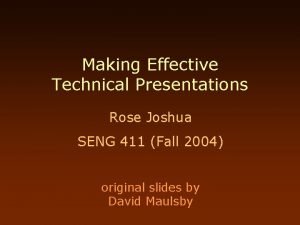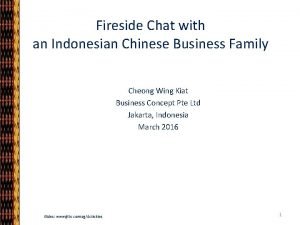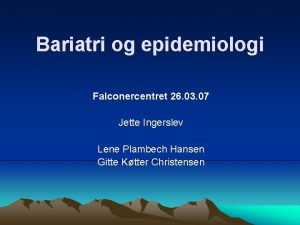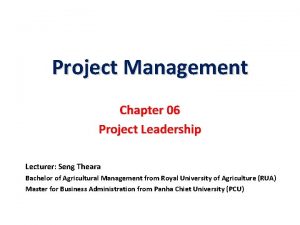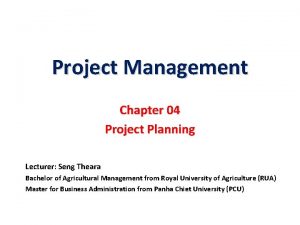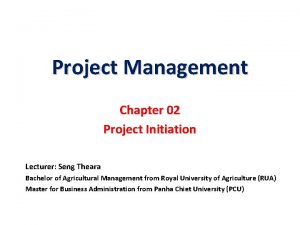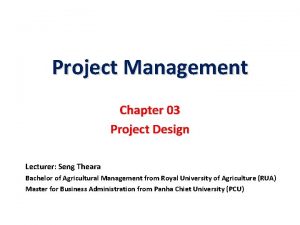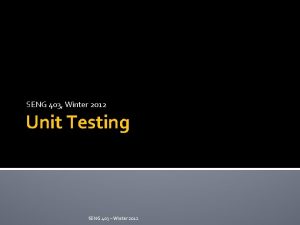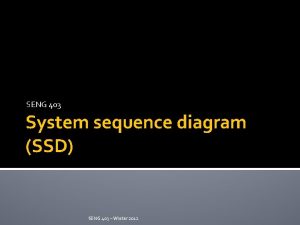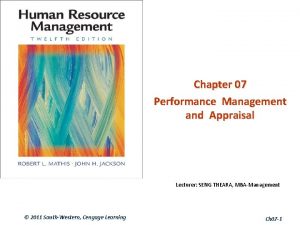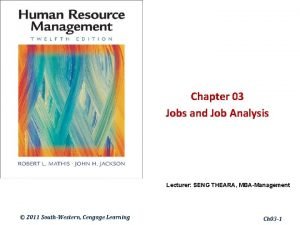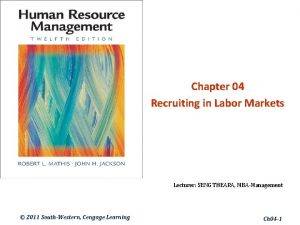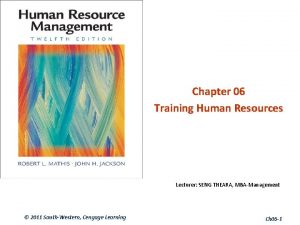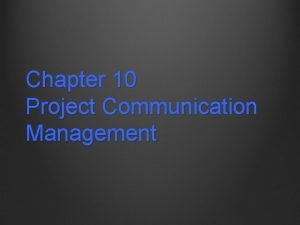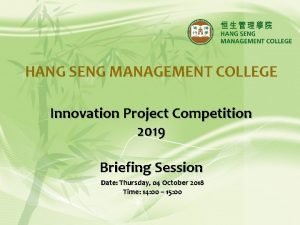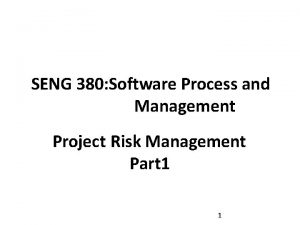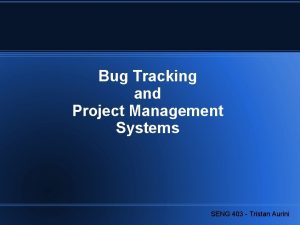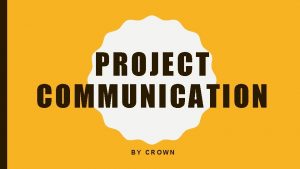Project Management Chapter 07 Project Communication Lecturer Seng



















- Slides: 19

Project Management Chapter 07 Project Communication Lecturer: Seng Theara Bachelor of Agricultural Management from Royal University of Agriculture (RUA) Master for Business Administration from Panha Chiet University (PCU)

Chapter Objectives 1. 2. 3. 4. Communication process Reports Meetings Project office 7 -2

Communication Process v. Communication ØIs the exchange and flow of information and ideas from one person to another; it involves a sender transmitting an idea or information to a receiver (U. S. Army, 1983). ØPeople communication with each other by three principle mean: üOral communication üVisual communication üWritten communication 7 -3

Communication Process (Cont’d) v. Communication ØOral communication üIs direct face to face communication between two or more persons. üIn oral communication, the sender and receiver exchange their thoughts or ideas verbally either in face-to-face discussion or thru any mechanical or electrical device like telephone. 7 -4

Communication Process (Cont’d) v. Communication ØVisual communication üIs communication used any image, symbol, sign or movements of some portions of their bodies include • • • The pointing finger The wink of an eye A smile, A nod A grimace 7 -5

Communication Process (Cont’d) v. Communication ØWritten communication üWritten communication involves any type of interaction that make use of the written word to communicate. • Letter • Email • Fax 7 -6

Communication Process (Cont’d) Source Message Feedback Receiver Encoding Context Message Channel Message Decoding 7 -7

Communication Process (Cont’d) v. Communication Process ØSource üThe source of communication is sender, or for our process. üTo be good source, you need to be clear about the message that you are sending. üDo you know exactly what is it that you want to communicate? 7 -8

Communication Process (Cont’d) v. Communication Process ØMessage üThe message is the information that you want to communicate. üWithout a message, there is no cause for communicating. üIf you cannot summarize the information that you need to share, you are not ready to begin the process of communication. 7 -9

Communication Process (Cont’d) v. Communication Process ØEncoding üEncoding is the process of taking your message and transferring it into proper format for sharing it with your audience. üIt requires knowing your audience and ensuring that your message provides all of the information that they need. 7 -10

Communication Process (Cont’d) v. Communication Process ØChannel üThe channel is the method of communication that you choose such as • • Face-to-face Telephone calls Videoconference Via email 7 -11

Communication Process (Cont’d) v. Communication Process ØDecoding üDecoding happens when you receive the message that has been sent. üThe communication skills required to decode a message successfully include the ability to read and comprehend, listening, activity, or ask clarifying question when need. 7 -12

Communication Process (Cont’d) v. Communication Process ØReceiver üReceiver is who received your message. üYou have expectations for a response from a receiver when you send a message. üIt is important to realize that each person that receive your message will be listening to it thru own individual expectations and perspective. 7 -13

Communication Process (Cont’d) v. Communication Process Ø Feedback üFeedback lets you gauge how successful you were at communication. üIt offers also a chance to adjust your communication process for future. Ø Context üThe context is the situation in which you are communicating. üIt involves the environment that you are in and that in which your audience is in, the culture of your organization such as the relationship between you and your audience. 7 -14

Reports v A virtual part of all communications in a project is about performance and progress reporting. v To have control of the situation the project manager needs to receive information from the team; what they accomplished and how much time they have used. v This information is needed to enable the project manager to make the right decision, but also when compiling reports for sponsor and steering committee, who are also dependent on factual and correct information in their decision making process. 7 -15

Reports (Cont’d) v. Example of performance reports ØPerformance reporting from project team members to the project manager: üActivity or resource level üResult and problem üTime ØPerformance reporting from project manager to sponsor and steering committee: üActivity or resource level üResult and problem üTime 7 -16

Meetings v. Examples of different meeting: ØInformation meeting: to distribute and compile information. ØWork meeting: to solve a problem or work a task. ØDecision meeting: to make and document decision taken. ØNegotiation meeting: to reach an agreement ØEvaluation meeting: quality assurance. 7 -17

Meetings (Cont’d) v. Project Meeting ØProject meeting should be held regularly, at least weekly and should be a part of the project plan’s scheduled activities. ØExample üAttendees üApprove minutes from previous meeting üProject status üReviews and update activity list 7 -18

Project Office v Gathering the project group in one location will quickly bring the project up to speed, keep the group together and develop effective team work. v Ideally the project group should be given its own project office where the entire group can work together. v To visually have this continuous updating on a daily basis increase awareness in the team members on what needs to be done and what should be prioritized. 7 -19
 Lecturer's name or lecturer name
Lecturer's name or lecturer name Jeannie watkins
Jeannie watkins Spe distinguished lecturer
Spe distinguished lecturer Good afternoon students
Good afternoon students Photography lecturer
Photography lecturer Lecturer in charge
Lecturer in charge Designation lecturer
Designation lecturer Designation of lecturer
Designation of lecturer Gcwak
Gcwak Lecturer name
Lecturer name Pearson lecturer resources
Pearson lecturer resources Spe distinguished lecturer
Spe distinguished lecturer Lector vs lecturer
Lector vs lecturer Lecturer in charge
Lecturer in charge Cfa lecturer handbook
Cfa lecturer handbook Lecturer asad ali
Lecturer asad ali Singapore stroke rehabilitation centre
Singapore stroke rehabilitation centre Joshua seng
Joshua seng Yeo hiap seng family tree
Yeo hiap seng family tree Bariatri seng
Bariatri seng

















